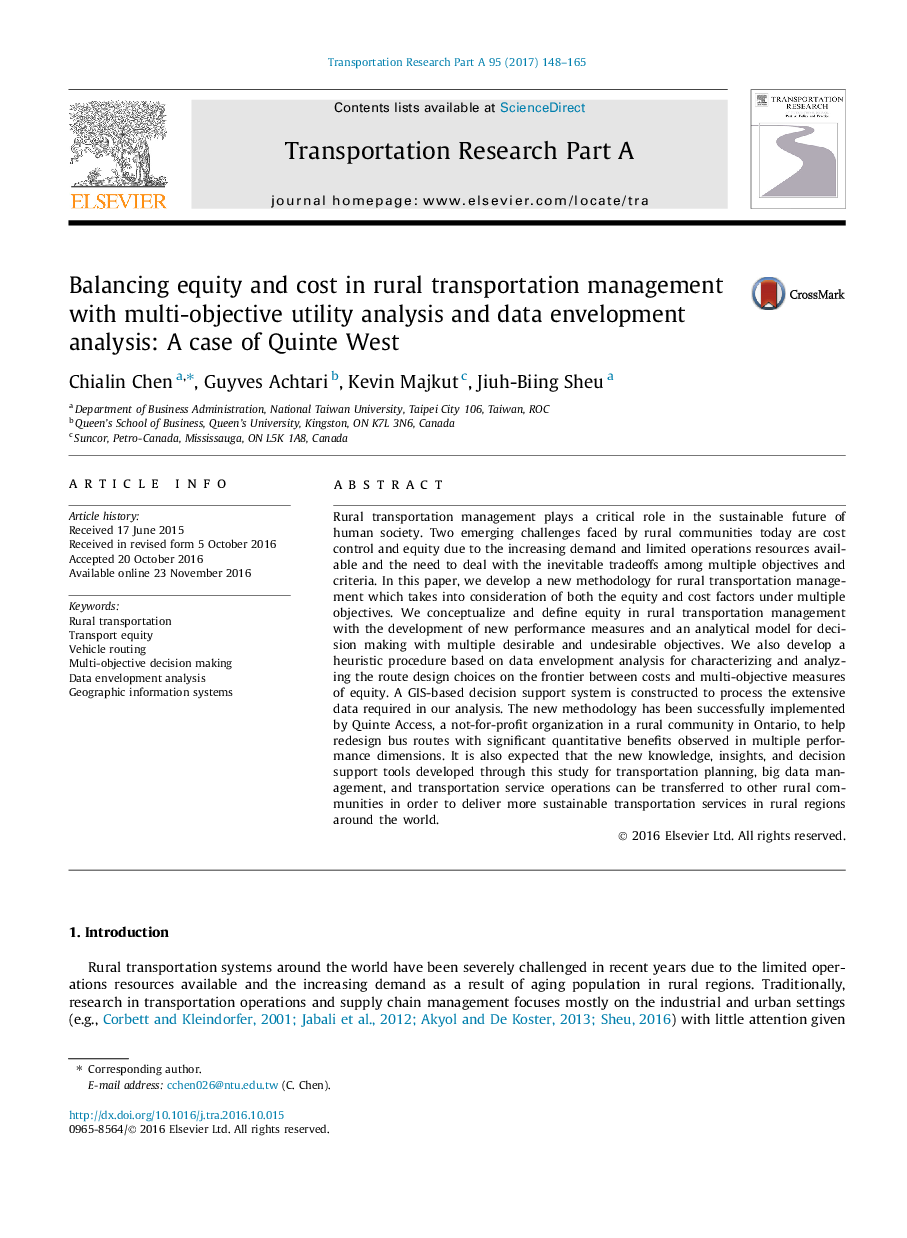| Article ID | Journal | Published Year | Pages | File Type |
|---|---|---|---|---|
| 4929075 | Transportation Research Part A: Policy and Practice | 2017 | 18 Pages |
â¢Rural transport equity is defined as a multi-objective measure of equitable accessibility to amenities.â¢A multi-objective model with desirable/undesirable objectives is used to analyze cost/equity tradeoff.â¢A DEA-based heuristic procedure can be used to search for noninferior solutions.â¢GIS is used to process and synchronize extensive data and analytical results.â¢The effectiveness of the proposed methodology is shown with a case study in a rural community.
Rural transportation management plays a critical role in the sustainable future of human society. Two emerging challenges faced by rural communities today are cost control and equity due to the increasing demand and limited operations resources available and the need to deal with the inevitable tradeoffs among multiple objectives and criteria. In this paper, we develop a new methodology for rural transportation management which takes into consideration of both the equity and cost factors under multiple objectives. We conceptualize and define equity in rural transportation management with the development of new performance measures and an analytical model for decision making with multiple desirable and undesirable objectives. We also develop a heuristic procedure based on data envelopment analysis for characterizing and analyzing the route design choices on the frontier between costs and multi-objective measures of equity. A GIS-based decision support system is constructed to process the extensive data required in our analysis. The new methodology has been successfully implemented by Quinte Access, a not-for-profit organization in a rural community in Ontario, to help redesign bus routes with significant quantitative benefits observed in multiple performance dimensions. It is also expected that the new knowledge, insights, and decision support tools developed through this study for transportation planning, big data management, and transportation service operations can be transferred to other rural communities in order to deliver more sustainable transportation services in rural regions around the world.
